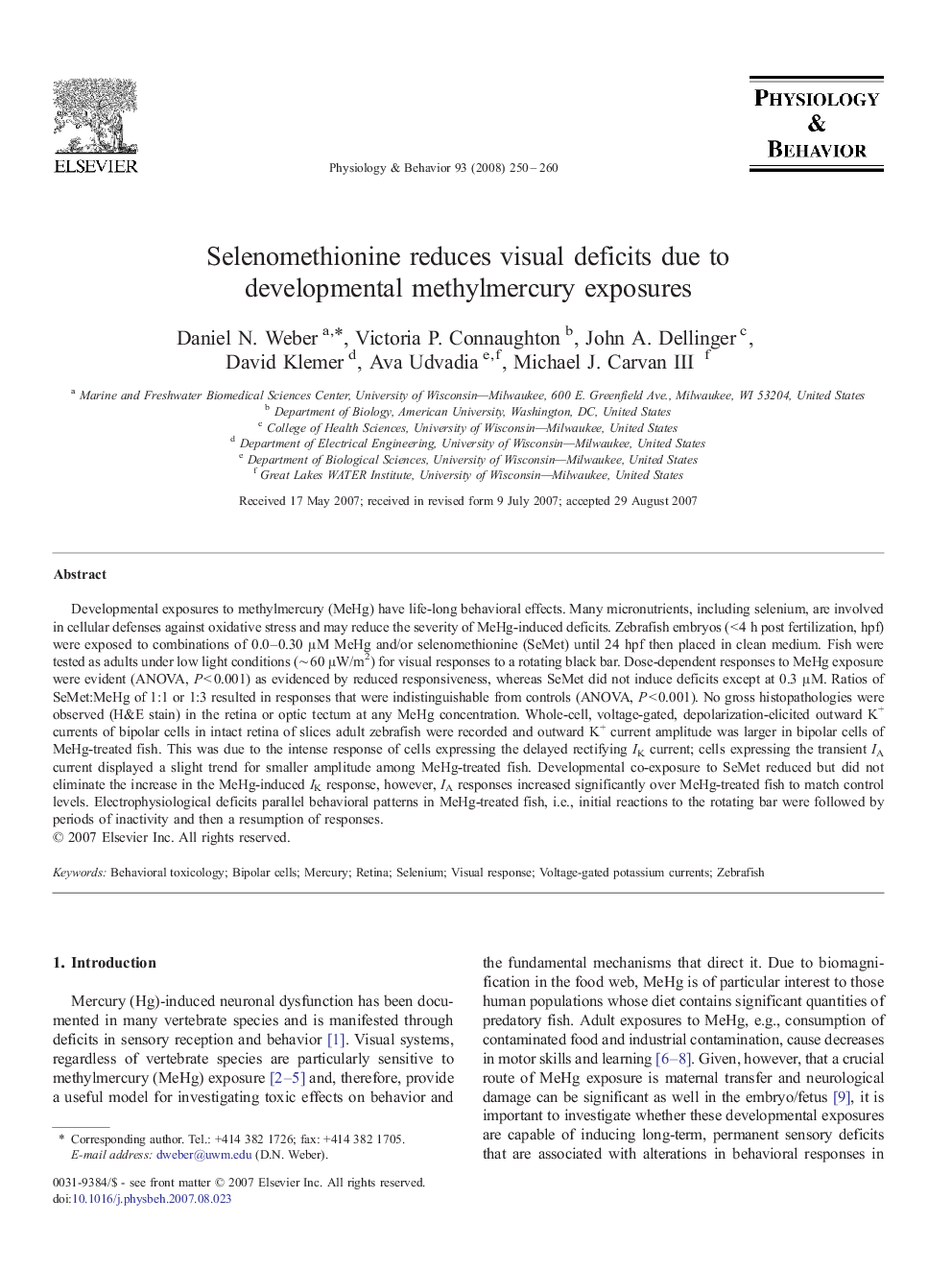| Article ID | Journal | Published Year | Pages | File Type |
|---|---|---|---|---|
| 2845625 | Physiology & Behavior | 2008 | 11 Pages |
Abstract
Developmental exposures to methylmercury (MeHg) have life-long behavioral effects. Many micronutrients, including selenium, are involved in cellular defenses against oxidative stress and may reduce the severity of MeHg-induced deficits. Zebrafish embryos (< 4 h post fertilization, hpf) were exposed to combinations of 0.0-0.30 μM MeHg and/or selenomethionine (SeMet) until 24 hpf then placed in clean medium. Fish were tested as adults under low light conditions (â¼Â 60 μW/m2) for visual responses to a rotating black bar. Dose-dependent responses to MeHg exposure were evident (ANOVA, P < 0.001) as evidenced by reduced responsiveness, whereas SeMet did not induce deficits except at 0.3 μM. Ratios of SeMet:MeHg of 1:1 or 1:3 resulted in responses that were indistinguishable from controls (ANOVA, P < 0.001). No gross histopathologies were observed (H&E stain) in the retina or optic tectum at any MeHg concentration. Whole-cell, voltage-gated, depolarization-elicited outward K+ currents of bipolar cells in intact retina of slices adult zebrafish were recorded and outward K+ current amplitude was larger in bipolar cells of MeHg-treated fish. This was due to the intense response of cells expressing the delayed rectifying IK current; cells expressing the transient IA current displayed a slight trend for smaller amplitude among MeHg-treated fish. Developmental co-exposure to SeMet reduced but did not eliminate the increase in the MeHg-induced IK response, however, IA responses increased significantly over MeHg-treated fish to match control levels. Electrophysiological deficits parallel behavioral patterns in MeHg-treated fish, i.e., initial reactions to the rotating bar were followed by periods of inactivity and then a resumption of responses.
Related Topics
Life Sciences
Biochemistry, Genetics and Molecular Biology
Physiology
Authors
Daniel N. Weber, Victoria P. Connaughton, John A. Dellinger, David Klemer, Ava Udvadia, Michael J. III,
